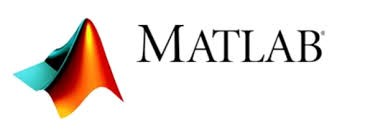MATLAB

MATLAB (an abbreviation of "MATrix LABoratory") is a proprietary multi-paradigm programming language and numeric computing environment developed by MathWorks. MATLAB allows matrix manipulations, plotting of functions and data, implementation of algorithms, creation of user interfaces, and interfacing with programs written in other languages.
History:
MATLAB was invented by mathematician and computer programmer Cleve Moler. The idea for MATLAB was based on his 1960s PhD thesis. Moler became a math professor at the University of New Mexico and started developing MATLAB for his students as a hobby. He developed MATLAB's initial linear algebra programming in 1967 with his one-time thesis advisor, George Forsythe. This was followed by Fortran code for linear equations in 1971.
In the beginning (before version 1.0) MATLAB "was not a programming language; it was a simple interactive matrix calculator. There were no programs, no toolboxes, no graphics. And no ODEs or FFTs."
Syntax:
The MATLAB application is built around the MATLAB programming language. Common usage of the MATLAB application involves using the "Command Window" as an interactive mathematical shell or executing text files containing MATLAB code.
MATLAB and other languages:
MATLAB can call functions and subroutines written in the programming languages C or Fortran. A wrapper function is created allowing MATLAB data types to be passed and returned. MEX files (MATLAB executables) are the dynamically loadable object files created by compiling such functions. Since 2014 increasing two-way interfacing with Python was being added.
Data Analysis:
Engineers and scientists use MATLAB to organize, clean, and analyze complex data sets from diverse fields such as climatology, predictive maintenance, medical research, and finance. MATLAB provides:
- 1. Datatypes and preprocessing capabilities designed for engineering and scientific data
- 2. Interactive and highly customizable data visualizations
- 3. Apps and Live Editor tasks that helps with interactive data cleaning, preparation, and code generation
- 4. Thousands of prebuilt functions for statistical analysis, machine learning, and signal processing
- 5. Extensive and professionally written documentation
- 6. Accelerated performance with simple code changes and additional hardware
- 7. Expanded analysis to big data without big code changes
- 8. Automatic packaging of analysis into freely distributable software components or embeddable source code without manually recoding algorithms
Wireless Communications:
MATLAB and Simulink can make your wireless communications designs faster and more efficient with modeling, simulation, testing, and implementation tools. Reduce development time, identify, and eliminate design problems early, streamline testing and verification, and automate many wireless design tasks. Ensure reliability and performance throughout your design workflow, from developing advanced algorithms to analyzing signals and engineering your end-to-end system configuration. You can deploy your generated code to radio and hardware and then test your deployed prototypes and devices.




Comments
Post a Comment